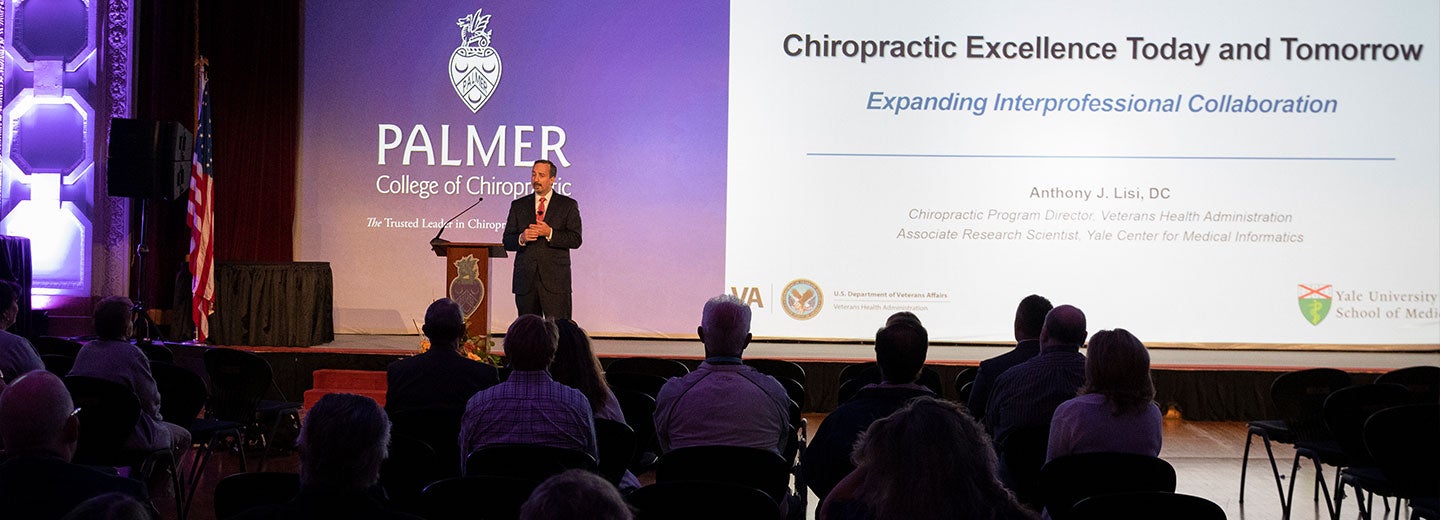Clinical Care of the Chiropractic Patient
Saturday, November 15, 2025
Palmer College of Chiropractic Main Campus, Davenport, Iowa
Room P206
Registration will close at noon CST on Friday, Nov. 14.
Check in begins at 7:30 a.m.
8-10 a.m.
Interoception, Chiropractic, and the Brain: Focus on Neurodevelopment and Concussion Care
Bryan Asby, D.C.
This course examines interoception’s role in neurodevelopmental conditions and concussions, highlighting underlying brain mechanisms and clinical challenges. Learn how chiropractic care can support interoceptive function, assess patients, and implement evidence-based strategies. Includes practical tools, case studies, and communication tips for improving outcomes in patients with brain-based disorders.
10 a.m.-Noon
Clinical Care of the Infant Patient
Brittney Asby, D.C.
This course provides a focused overview of performing clinical consultations and examinations for infants. Through a structured case presentation format, participants will learn how to conduct comprehensive consults, including key questions to ask caregivers regarding birth history, developmental milestones, feeding behaviors and more. The course emphasizes a neurological-based physical examination tailored for infants, covering tone, reflexes, cranial nerve assessment, and alertness. Attendees will also review best practices for conducting infant office visits, ensuring both clinical efficacy and comfort for the patient and family. Practical guidance will be given on essential office items to support infant care such as exam tools, developmental screening materials, and infant-friendly accommodations. Participants will leave with hands-on practice of the neurological exam, as well as clear direction on consult structure and documentation, including templates and key elements for consult notes and referral communications. This session is ideal for clinicians seeking to enhance both their diagnostic skills and office preparedness for infant neurological evaluations.
Noon-1 p.m.
Lunch provided by Palmer College Continuing Education
1-3 p.m.
Clinical & Imaging Evaluation of the Ankle
Emma Forlow, D.C., DACBR, CCSP®, ATC, RMSK
Part 1: Anatomy & Clinical Evaluation (30 minutes)
- Functional Anatomy: Review of osseous, ligamentous, muscular, and tendinous anatomy.
- Subjective & Objective Evaluation: Gathering information from patient history including mechanism of injury (e.g., inversion, eversion, direct trauma), location and type of pain, past medical history, previous ankle injuries.
- Physical Examination: observation, palpation, range of motion
- Evidence-based review of special tests including Anterior Drawer Test, Talar Tilt Test, Squeeze Test, and Thompson Test.
Part 2: Radiological Evaluation of the Ankle (30 minutes)
This section focuses on the different imaging modalities and their clinical utility. Conventional Radiography:
- Review of standard views: Anteroposterior (AP), Mortise, and Lateral.
- Explanation of the Mortise View and its importance in assessing the talus and ankle joint space.
- Discussion of Ottawa Ankle Rules to determine the need for X-rays and reduce unnecessary imaging.
Advanced Imaging Modalities:
- Ultrasound evaluation: including descriptions of the use for dynamic evaluation of tendons and ligaments.
- Magnetic Resonance Imaging (MRI)
- Computed Tomography (CT) Scan
Part 3: Common Ankle Pathologies & Case Studies (40 minutes)
- Ankle Sprains
- Ankle Fractures
- Tendinopathies
- Case Studies
3-5 p.m.
The Differential Diagnosis of Nutritional Anemias
Cheryl Lyon, N.D.
This session will explore the complexities of clinical laboratory testing for the most common types of nutritional anemias. Participants will gain insight into which labs to order and when, when to refer, and when nutritional management is appropriate. Treatment and follow-up testing will be discussed where applicable.
Session Learning Outcomes – at the end of this session, the learner will be able to:
- Describe the signs and symptoms of mild to severe anemias.
- Describe the process of hematopoiesis and the production of hemoglobin.
- Describe the components, indications, and clinical utility of RBC studies, iron panels, and B12/folate markers in the differential diagnosis of anemia.
- Identify morphological abnormalities of RBCs with common etiologies.
- Differentiate between the major anemia types and identify which follow-up tests will aid in differential diagnosis and management/co-management.
5-7 p.m.
Beyond the Basics: Comprehensive Diagnosis and Management of Tendinopathies
Asia Sockrider, D.C.
Tendinopathy is one of the most common, yet complex, conditions encountered in musculoskeletal practice. This session will provide a deep dive into the current evidence on tendinopathy, expanding beyond introductory principles to highlight advanced strategies for clinical assessment, imaging interpretation, and management. Participants will explore key pathophysiological mechanisms, the role of differential diagnosis, and decision-making around imaging and intervention. Emphasis will be placed on exercise prescription, load management, adjunctive therapies, and practical strategies for long-term outcomes. Clinicians will leave with an integrated framework for approaching tendinopathy across patient populations, from the active individual to the high-performance athlete.

